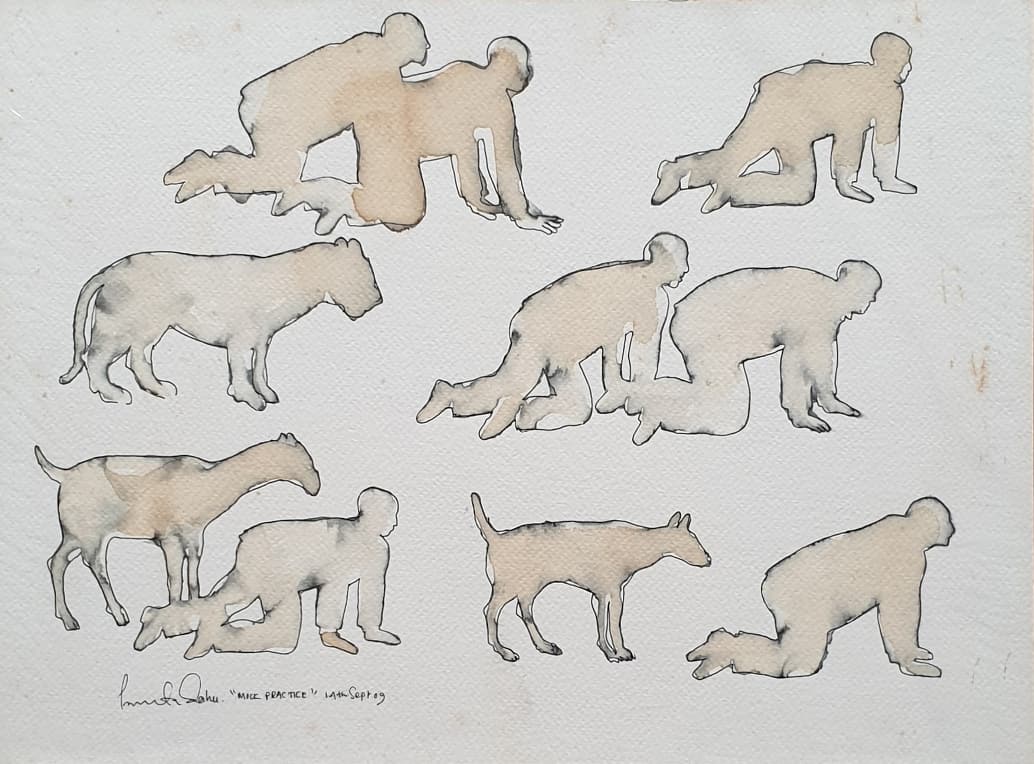About the Artist & his work :
Born 1968 in Orissa, Prasanta completed his B.F.A. in Painting from Kala-Bhavana, Visva- Bharati University, Santiniketan in 1993-98 and M.F.A. in Painting from M.S. University, Baroda in 1998-2000. He has been a part of several group shows in Kolkata, Mumbai, New Delhi and Baroda during the last few years. He was awarded the Gold Medal for securing 1st position in Dept. of Painting, M.S. University, Baroda in 2001, Nasreen Mohmudi Trust Award again for securing 1st position in M.F.A. from the same University, in 2000, Camlin Award for securing 1st position at B.F.A. level at Kala- Bhavana, Santiniketan in 1997. He was awarded 1st prize at the Eastern Print Biennale, by Eastern Zonal Cultural Center, Kolkata in 1995. He has also received National Scholarship of the Ministry of Human Resource and Development, Govt. of India in 1996-98.
Commingling pictures and text, Sahu borrows motifs from the mass media. The black and white photographic images adopt a documentary style of address, presenting a snippet of everyday reality, such as we would be likely to find in a newspaper or magazine clipping. Yet, in Sahu’s oeuvre, this process of citation operates on multiple levels.
The artist is intensely aware of the pictorial surface of the canvas. Monochromatic pictures are contrasted with vividly painted areas and abrasions on the canvas form interesting textural motifs. However, in his work Sahu moves away from the high-modernist obsession with the formal properties of the painted surface. The paintings operate as performative gestures connecting the realms of art and society.
For example, if Sahu draws attention to the materiality of the canvas through deliberately disfiguring its surfaces, the technique also highlights the symbolic importance of the image thus blemished. Violence is enacted on the pictorial surface, so that art is no longer the terrain of isolated intellectual pleasure, it becomes part and parcel of our social and political environment: both implicated in its aggression and a place for critique.
As such, Sahu’s painting functions as social commentary. Acutely conscious of the inherent conflicts in the urban condition, his works draw ironic, sometimes poignant, attention to its underlying brutality and cloaked hypocrisies. The crowd forms a familiar theme in his canvases. Through the depiction of its seething mass of faces, the artist analyses common human sentiments and the complicated relation between individual consciousness and collective deeds.










